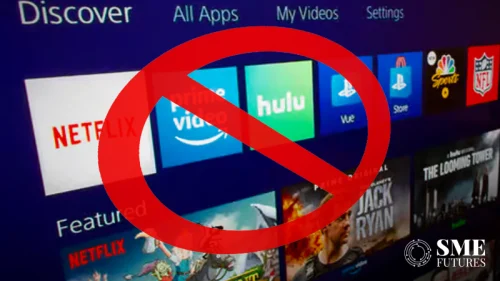Now that everyone (almost!) is on the internet, the number of India’s internet users is increasing way too fast. In 2020, the country had over 749 million users. Believe it or not, there are going to be over 1.5 billion users by 2040. In fact, India was ranked as the second largest online market worldwide in 2019, second only to China.
Interestingly, even as the internet users are multiplying exponentially, the internet penetration levels are not at par with them across India. This certainly is a challenge, but the internet revolution, the advent of 5G and the government itself are continuously working to resolve this problem. For the consumers though, there are a few other challenges that are frustrating them.
Your internet is down!
We don’t like this sentence. A sense of anxiety engulfs us all whenever this happens. This usually goes two ways—either the internet itself is down, or its speed is too slow.
To troubleshoot internet issues, typically customer support agents are dialled, or ISP support agents are called. They may help you with some standard setup instructions, power cycle your devices or even come to your homes to sort things out. Overall, your precious time is wasted.
For businesses, downtime can be a real pain—in terms of losses in OPEX, reduced worker productivity, lost potential revenue and network repairs.
“It is still the internet. It is still connectivity. For an end user it is always about experience. It doesn’t matter if you have the latest and the greatest Wi-Fi gear at home, if you are not able to browse or can’t even do a Zoom call, then you will say that the internet provider sucks. This is the bottom line,” says Pramod Gummaraj, CEO of Aprecomm.
Due to the ever-increasing number of internet users and rapid digitalisation, there is a greater need for more reliable networks with low latency. In the Indian scenario, the time required for identifying and resolving network issues is often longer due to the internet service providers’ reliance on manual processes.
Also Read: How India’s push for financial inclusion can narrow the credit gap
But these problems will become a thing of the past with Aprecomm solutions, says Pramod Gummaraj.
“Unless and until the cable is cut, which we cannot really solve, as there is no software to repair that,” he chuckles.
It runs on AI
This Bengaluru-based start-up founded by Pramod Gummaraj and Guharanjan in 2016, is now disrupting the Wi-Fi experience provided to users by the internet service providers and the technology service providers. Gummaraj says that his start-up provides an immediate identification and resolution of any network issue that can be encountered by Wi-Fi users with the help of AI. “There is a significant gap between what we think in the labs and what actually happens in the field,” he tells us.
“This is where we thought that we needed some virtual intelligence to be present in these end homes where people are actually experiencing the issues. And there should be a way to quantify that experience without actually going in there,” he continues.
In addition, due to education going online, the start-up is seeing a significant rise in the demand for reliable connectivity. “There is a lot of open space to play around in. Gradually, we are witnessing more and more individual users complaining about internet connectivity issues. The quality of the experience has now taken centre stage as consumers are now asking for reliable connectivity,” he points out.
So, what exactly happens?
“Wi-Fi problems are not limited to the ISPs alone. They are present in enterprises; they are present in SMBs. They are prevalent everywhere,” Gummaraj elaborates.
And the actual reasons for the connectivity issues that consumers face, may or may not get really solved. The problems can recur, even after the consumers are asked to reboot their devices a couple of times, he says. “This is the junction where the ISPs might end up losing these valuable customers,” he avers.
That’s where Aprecomm comes into the picture to save the day for the ISPs and the enterprises. “We don’t want experts to go physically and analyse things. Aprecomm measures the quality of the experience of the end user and then relays that data to the ISPs” he says while explaining the concept to us.
“So, before you call them, they should be able to understand what each of these homes is experiencing and what the issue exactly is. Then, if there is anything they can do to resolve it, they should be able to do so. We provide end-user quality of experience measurement, which we refer to as high sense. In simple terms, it is known as the Customer Happiness Index. It is what we assess,” he tells us.
Also Read: People are switching to BNPL as its affordable and gets quality stuff
A team of machine learning scientists is working behind the scenes to resolve these issues. These experts analyse the patterns and then devise a method to precisely measure the experience. Once they have measured the experience; they answer questions like—Why is this user’s quality of experience deteriorating? And how can it be made better? What steps should be taken to improve it?
“ISPs now have the knowledge and the experience to identify the root causes of these problems and then improve the overall experiences of their customers by taking the right actions. Some of these actionable recommendations are automated, so that the consumers are not inconvenienced in any way,” he further elaborates.
The focus is on solving the issue at hand
Coming from a hardcore networking background with years of experience, Gummaraj and his team have extensive knowledge about what happens behind the scenes. “We are all an ex-Qualcomm team. We’ve seen this problem before. What we build in the labs does not always translate to the users. However, when customers use a platform, it becomes a low-end model in terms of analogy. Which implies that people are still unable to watch YouTube,” he says.
As a service provider, Aprecomm focuses on everyone, basically on anyone who uses the internet. “We are present in the enterprises; we are there for the ISPs,” he tells us.
“But the problems are much more complicated in the enterprises,” says Gummaraj. For instance, an airport has thousands of access points. And solving a problem here is all about finding where the problem is. “Scoping the problem becomes a challenge,” he adds.
The company’s products are tuned in such a way that their bottom line is—the issues are similar, and the solutions will be similar, but it can vary a little.
“Our consumer can be an individual or an ISP—but our end user is always an ISP. We collaborate with ISPs to ensure that our intelligence is embedded in each of the various models that the ISPs or the OEMs use. In the case of enterprises such as HFCL, which is our client, we ensure that their customers also get the benefits of Aprecomm’s solutions,” he says.
Also Read: We are looking at a lot of investment in logistics infra, says Elixia founder Mihir Ravani
Talking about a space that involves intelligence beyond wireless, switches and routers and which is currently a niche area, Gummaraj claims that this arena has a US$ 2 billion market value. “This is a global estimate. Its Indian market is also pretty big. It should be around half a billion, in my opinion,” he estimates.
The initial journey
Aprecomm is a bootstrapped start-up. “We still haven’t taken any money. It is all bootstrapped and we are cash positive. Our revenues are pretty good in that way,” Gummaraj tells us.
However, because the start-up journey is difficult in and of itself, Aprecomm’s team also experienced some early setbacks. “In the early stages, we did have some hiccups in terms of making our customers understand our solution and the concept that reliable Wi-Fi is important, especially here (in India),” he reminisces.
Aprecomm’s solution was actually launched in early 2019. However, they started with market research and innovating the product at the same time in around 2016-17, when people did not have much understanding of this concept. “We were researching about the market—how would it react? Whether the Indian market was ready for our product? At that time, we had people asking us why did we need to do all these things? Why couldn’t we just send a person to reboot the devices? So, there was not much awareness around the quality of the experience as such. And that has also been the case with the industry,” he tells us.
But times have changed. People have become extremely conscientious, and they require quick and dependable connections. “For example, my child is enrolled in online classes. As a consumer, it is critical that we have a high-quality internet connection so that there is no downtime or lag. However, there has been a shift in the end-user mindset, and we are seeing the same shift in the service provider industry as well. When a customer begins to push, the service providers automatically enter a state in which they say, okay, let me upgrade my gear or the type of tools that I use to ensure that the QoEs (Quality of Experience) are satisfied,” he says.

Aprecomm helps save OPEX
Aprecomm has been assisting ISPs to resolve issues at the backend, without them having to physically go door-to-door to fix them. This gives them an upper hand, and also helps them to reduce their operational costs.
ISPs have to maintain their networks to ensure that their customers remain happy. But if anyone raises a complaint, an ISP will resolve it in two ways—it may send its engineers to the location or it might analyse the issue at the backend, where different teams are involved. Either way, it is an expensive proposition for the ISP. And the other challenge is that it may end up losing those consumers who are not happy with the experience. But Aprecomm ensures that this does not happen, claims Gummaraj.
Also Read: Inside India’s olfactory factory: Kannauj’s alchemy surviving amid challenges
“These are the areas where we can help. We use our solution to try to optimise the existing processes and to see how they can be improved. Let’s assume you arrive home and discover that your network is down. You then file a complaint, but the service provider says that they can only come the next day to fix the problem. This ruins your service experience. However, with solutions like ours working at the backend, you’ll receive an SMS from your ISP stating that there is a network issue and that they are working on it, which could take a couple of hours,” he asserts.
5G has widened the scope
Even though the Aprecomm concept is unique, Gummaraj strongly feels that they could face stiff competition, but vertical wise and at different points. “As I said, we have multiple verticals, and vertical wise we will see a lot of competition at different points. For example, Cisco has a similar product, but it could be restricted to only Cisco devices. If you look at home spaces, Plume could be our competition, which is again restricted to Plume devices. We are more hardware agnostic, and we try to bring this intelligence across in our business as well. We have to ensure that this network intelligence is more demanding,” he tells us.
Aprecomm has a presence in four to five countries in terms of penetration and plans to expand rapidly. Meanwhile, the company also intends to drop its bootstrapped moniker. “In terms of market share, we now have a sizable presence in India. We want to ensure that we grow exponentially. The plan is to expand our footprint in 20-25 countries and penetrate those markets. So, the South-East Asian markets, Australia-New Zealand, as well as Europe will happen once we are fully prepared. Over the next year, we will work on stabilising these regions. Meanwhile, on investment per se, our plan is to raise money soon,” Gummaraj says while talking about the roadmap for his company.
As per their expansion blueprint, the start-up has recently partnered with Singapore based Technology Distribution Specialists (TDS) for distribution in the communications industry across the Asia-Pacific region.
The company is also trying to do a lot of network automation in this sector. For this they have prepared a technical roadmap to align with their future plans. “It’s aligned to ensure that once we are able to gain all kinds of customer bases, we can work on improving the network experience for everyone. So, there are a bunch of novel things that are going on in the company,” he adds.
At the same time, 5G has been just launched in India. Given that the internet is going to get even better, the Aprecomm team excitedly feels that now they have a much wider scope to grow further. “Absolutely, there will be bigger opportunities for us now,” Gummaraj enthuses.
Also Read: Moonlighting: How unethical or justified is it
5G is more like a backhaul technology that is going to rapidly evolve in India, he states.
“Is it going to wipe off Wi-Fi? No, that will not happen. Wi-Fi will coexist with it. And the Quality of Experience (QoE) is going to be much more predominant. So yes, we will be expanding ourselves to give you a fantastic end-to-end quality of experience, whether you are on a 5G network or on a Wi-Fi network. There would be a lot of things to do once 5G comes into the picture,” says Gummaraj as he signs off.











